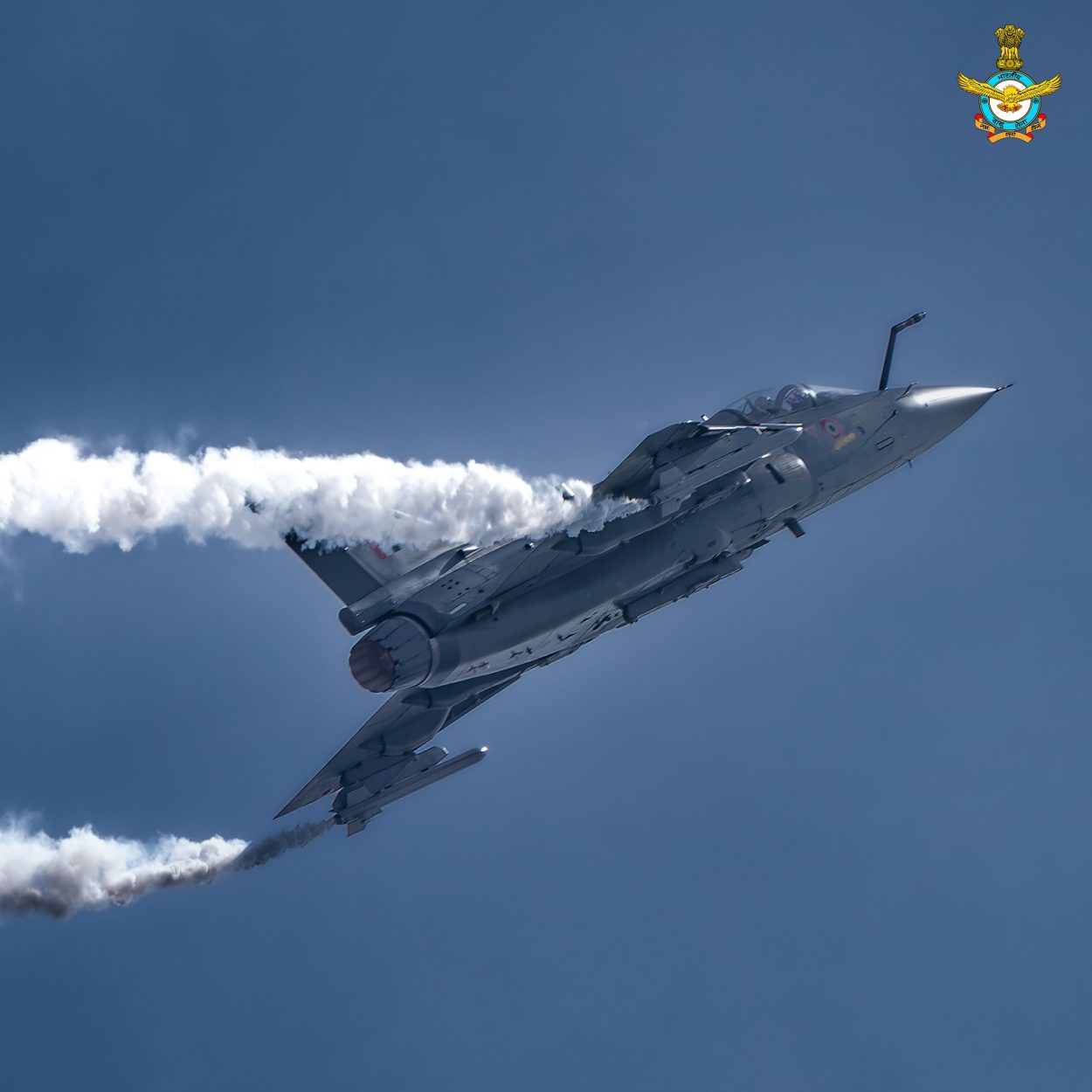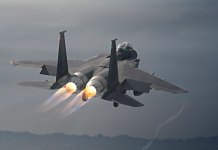After two years of delay that pushed back the delivery of India’s indigenous Light Combat Aircraft (LCA) MK1A, the American jet engine manufacturer GE Aerospace has delivered the first of the 99 F404 engines.
The delay in the engines has thrown the Indian Air Force’s (IAF) fighter fleet’s modernization into a tizzy. The IAF has been relying on the induction of the LCA Mk1A fighters before it could retire the last squadron of its Soviet-vintage MiG-21s.
In addition, the IAF, facing threats from Pakistan’s and China’s rapidly modernizing air forces, has been grappling with depleting fighter squadron strength.
On March 25, GE Aerospace announced that it delivered the first contracted engines to the Indian aircraft maker Hindustan Aeronautics Limited (HAL) for the LCA MK1A. GE Aerospace is expected to deliver 12 F-404 engines for the Indian homegrown fighter jet this financial year.
The HAL, which has received a lot of flak from the IAF for overpromising and underdelivering, has readied four LCA MK1A using category B engines. These are the leftover engines from an earlier deal with the American firm. The four fighters were displayed at Aero India 2025, which concluded in February.
The HAL aims to deliver the 83 LCA MK1A aircraft ordered by the IAF in the first tranche in three and a half years. It is also in the final stages of signing the contract for a further 97 LCA MK1A with the IAF, and delivery of these 97 aircraft is expected to be completed by 2031.
GE Aerospace has claimed that the supply chain issues from the lockdown were caused in the aftermath of the COVID pandemic. The delay in engine supply pushed back the delivery schedule of LCA MK1A by two years.
In 2021, HAL inked a contract with GE Aerospace to supply 99 F404 engines valued at US$716 million. Delivery was scheduled to begin in March 2023, in accordance with HAL’s goal of delivering 16 aircraft per year.
LCA will be the mainstay of the IAF’s fleet. The HAL has set up three manufacturing lines (two in Bangalore and one in Nasik) to deliver 24 aircraft annually.
The HAL Chief stated that the private sector has also been co-opted and can deliver 10 aircraft annually if required. Meanwhile, the IAF chief has been quite vocal about the delay in manufacturing the aircraft, which has resulted in the force being down to 31 fighter squadrons against the sanctioned strength of 42.
In 2024, LCA Tejas Mk1A, the advanced variant of the already inducted LCA Mk1, took to the skies, and the IAF placed one of the biggest defense orders for 83 fighter jets, and is in the final stages of placing another order for 97 aircraft.
IAF, the fourth largest air force in the world, will soon operate around 350 LCAs (Mk-1, Mk-1A, and Mk-2 variants). The force has already inducted 32 Mk1 aircraft (it has placed an order for 40 Mk-1 jets).
In the coming decade, the IAF, grappling with a shortage of fighter jets, will have the homegrown LCA as the cornerstone of its combat power. The fighter jet will be equipped with Indian-built weapons.

Powering The Indian Fighter Jets
India has sent a mission to the Moon, but aero-engine technology still eludes it. Experts opine that building an aero-engine requires decades of experience to build a sturdy engine capable of withstanding high speed and the rigors of flying. More countries possess nuclear weapons than indigenous aero-engines.
The LCA development project has suffered enormously because India lacks the capability to build its own fighter jet engines. After the indigenous project ‘Kaveri’ failed to rev up the desired thrust, HAL had to rely on GE Aerospace engines to power its jets.
The dry version of the Kaveri engine generates roughly 49-51 kN of thrust. During high-altitude simulations conducted in Russia last year, the engine generated 48.5kN of thrust, making it well-suited for UAV applications, particularly the 13-ton Ghatak, India’s advanced stealth Unmanned Combat Aerial Vehicle (UCAV) program.
After meeting obstacles in developing a jet engine powerful enough for its fighter jets, in August 2021, HAL signed a $716 million deal with GE for 99 F404 aircraft engines and support services for the LCA Mk1A.
In 2023, during Prime Minister Narendra Modi’s visit to Washington, the two countries inked a contract to manufacture 98 kilo-newton thrust GE-414 engines that will power the LCA MK II, which was expected to be rolled out by the end of 2024 but is still a far cry from reality. About 120 LCA MKII are expected to be delivered between 2028-2035.
The Advanced Medium Combat Aircraft (AMCA), the Indian 5th-generation fighter aircraft, is now expected to go into production by 2036. Foreign engine makers American GE Aerospace, French Safran, and British Rolls Royce are switching on their thrusters to win the contract to power AMCA.
The engines to keep AMCA in the air will be more complex, as 5th-generation fighters generally have the engine embedded in their systems to reduce radar signature.
DRDO Chief Dr. Samir V. Kamat said at Aero India 2025: “We are in discussions with GE, Rolls Royce, and Safran for the joint development and manufacturing of the AMCA engine. A decision is likely by the end of this year.” The jointly developed engine is expected to go into trials by 2033 and in production by 2035.
All three firms are leveraging their legacy and work in India to win the contract.
Safran has already been active in India for a long time, supplying turbine engines for Indian helicopters. For AMCA, Safran has offered India ownership of the engine technology that will be developed in collaboration.
This step aims to give India “strategic independence” to design, develop, and produce military jet engines for domestic use and export.
The engine co-developed with Safran is expected to deliver a thrust range of 110kN to 120kN.
GE engines will power different variants of Indian LCA. The British newspaper The Financial Times reported that GE’s offer for AMCA is to withhold a small portion of the intellectual property. The decision seems to stem from India’s close ties with Russia.
Rolls-Royce hoped to provide new engines for the IAF’s British ground attack bombers, the Jaguars, before the plan was shelved. However, it brings extensive experience to the table. It has developed the EJ200 engines that power the Eurofighter Typhoon. It has also been cautious about transferring complete technology.




